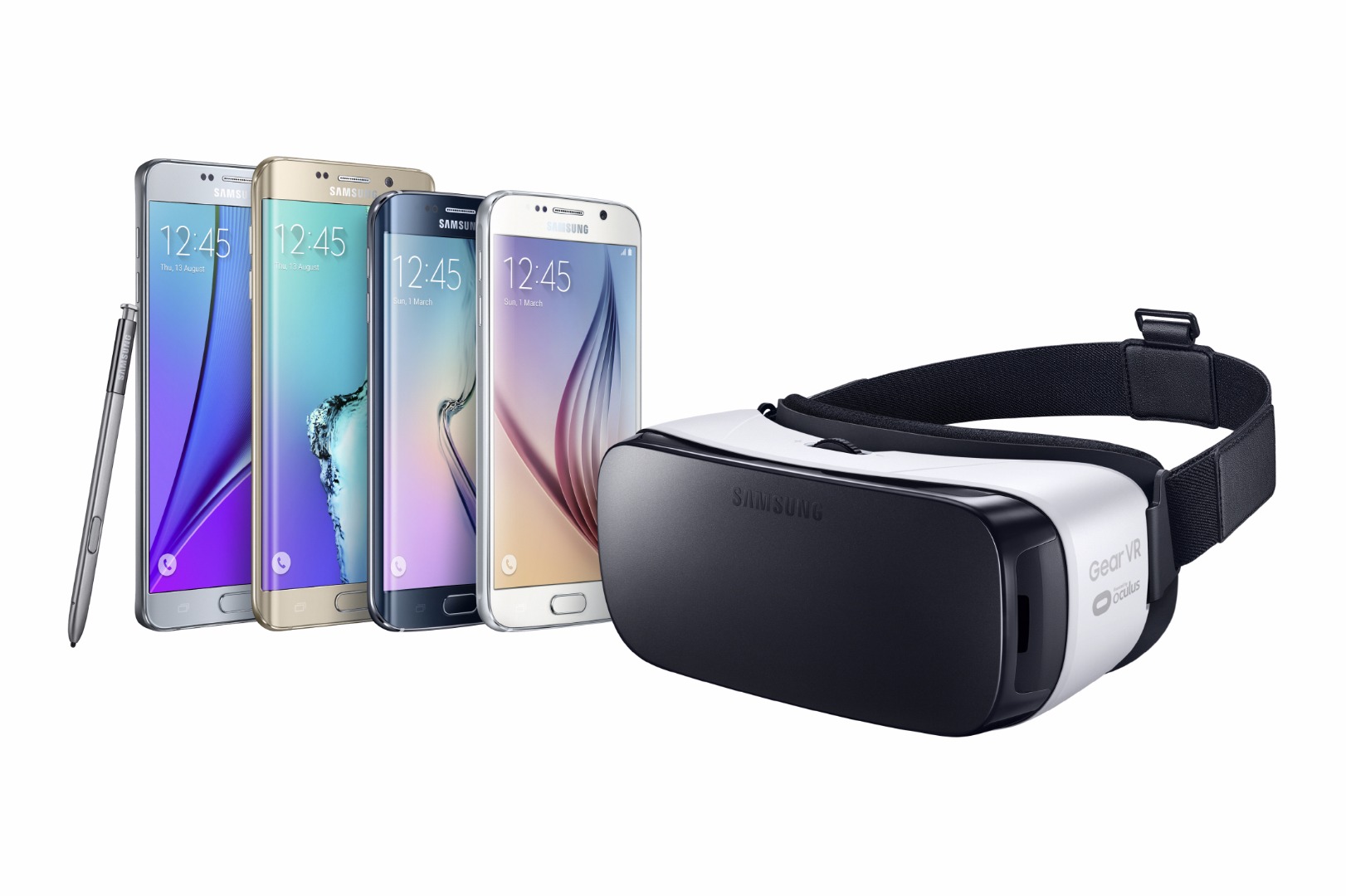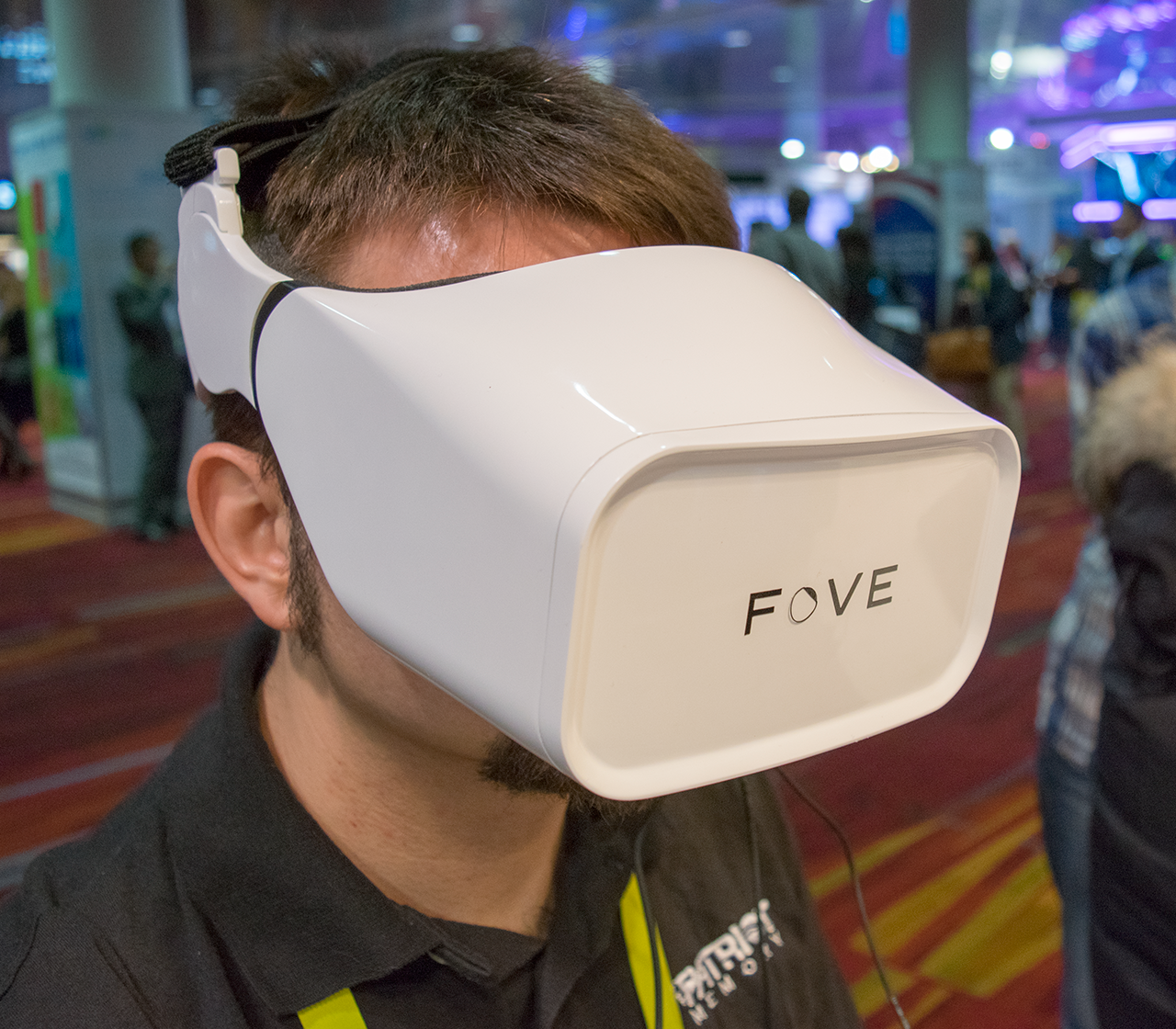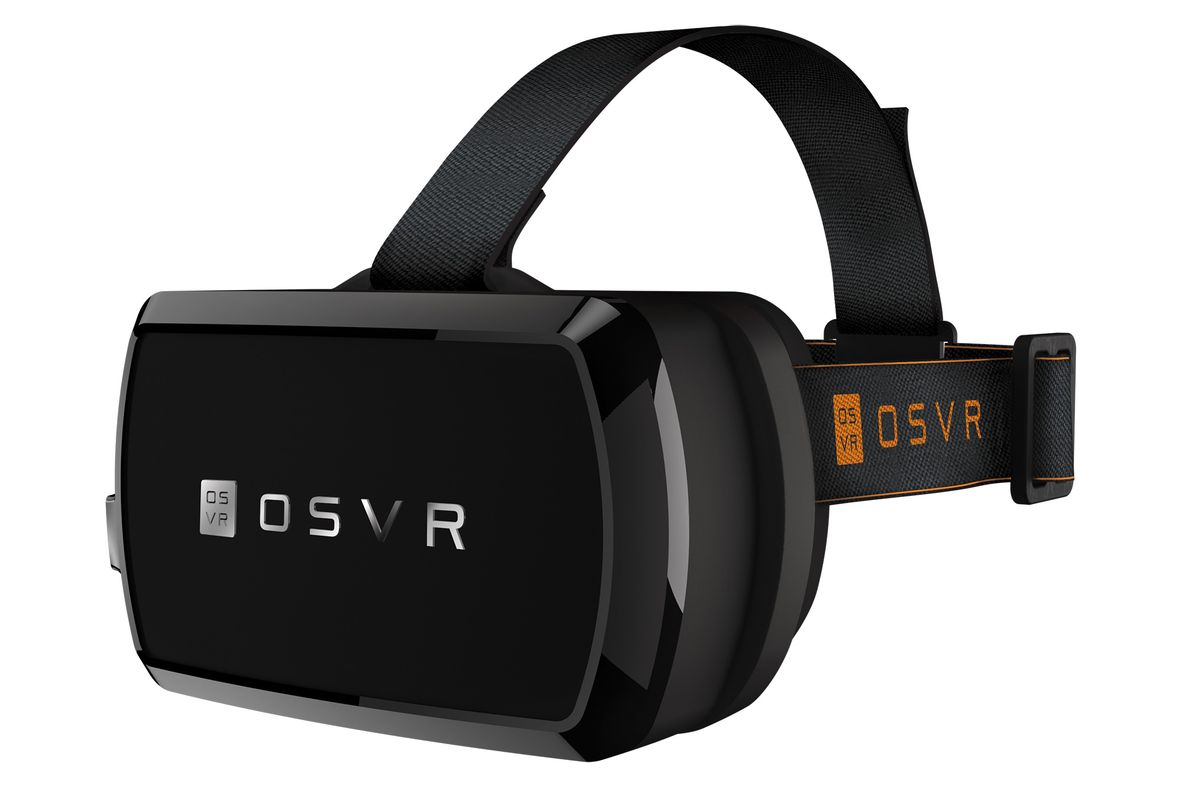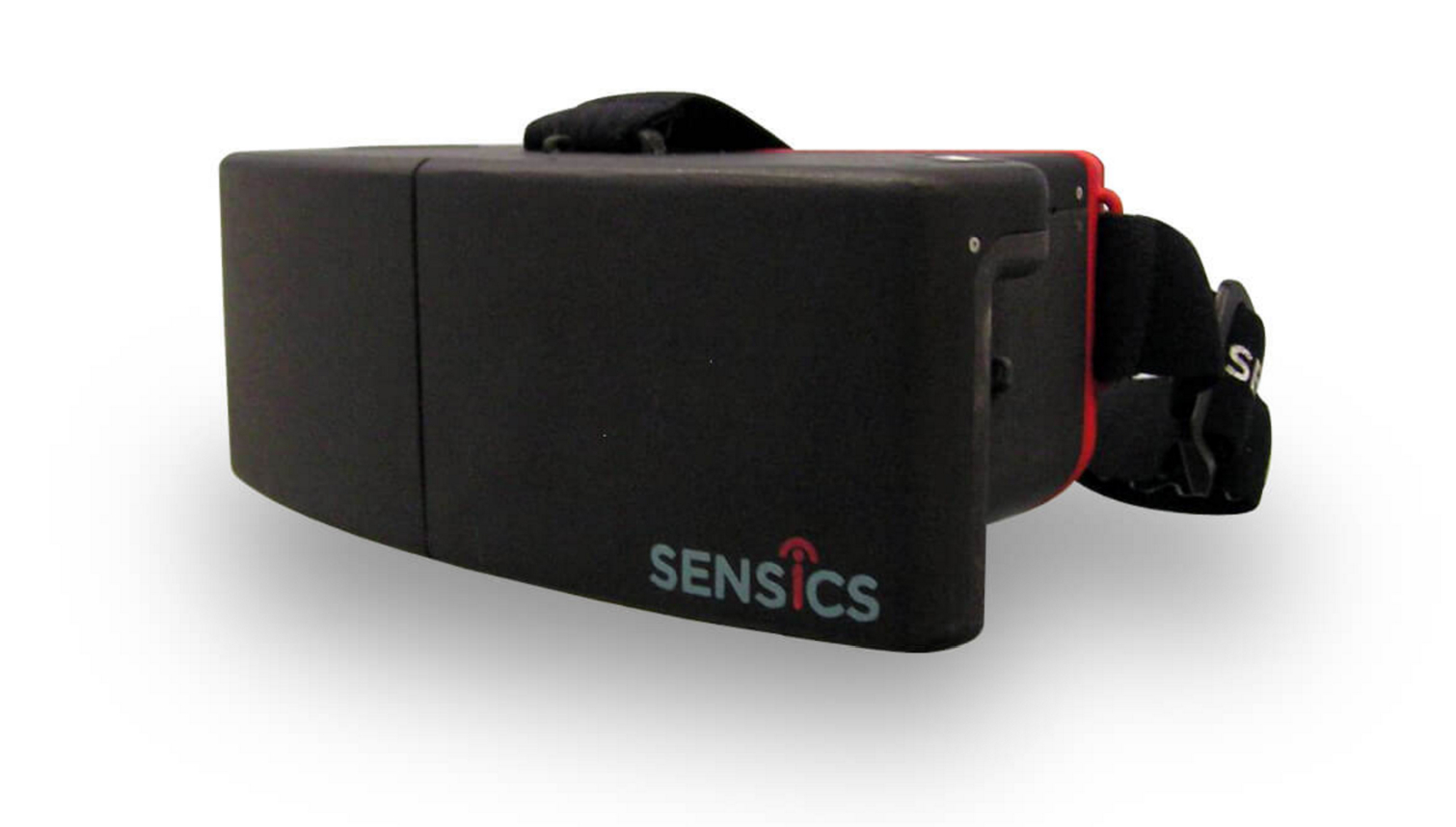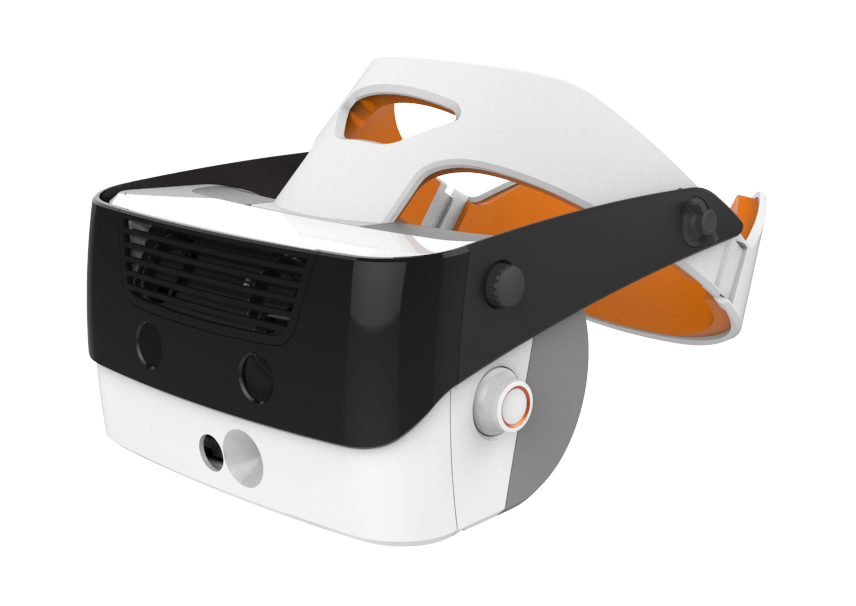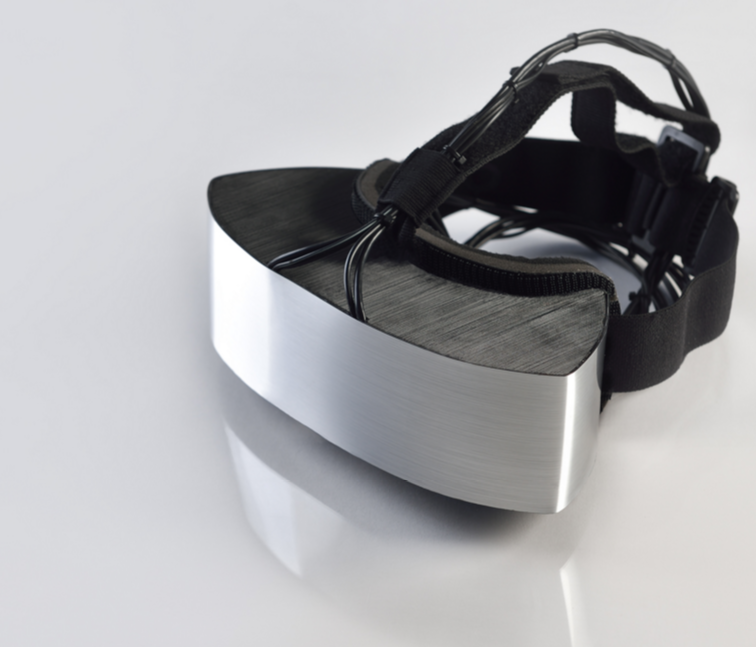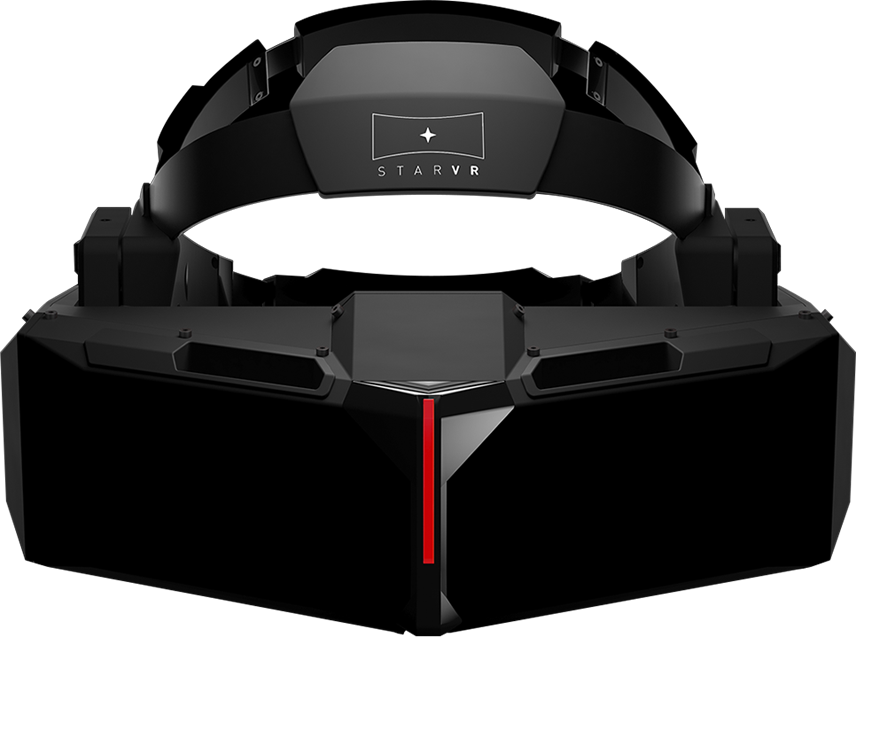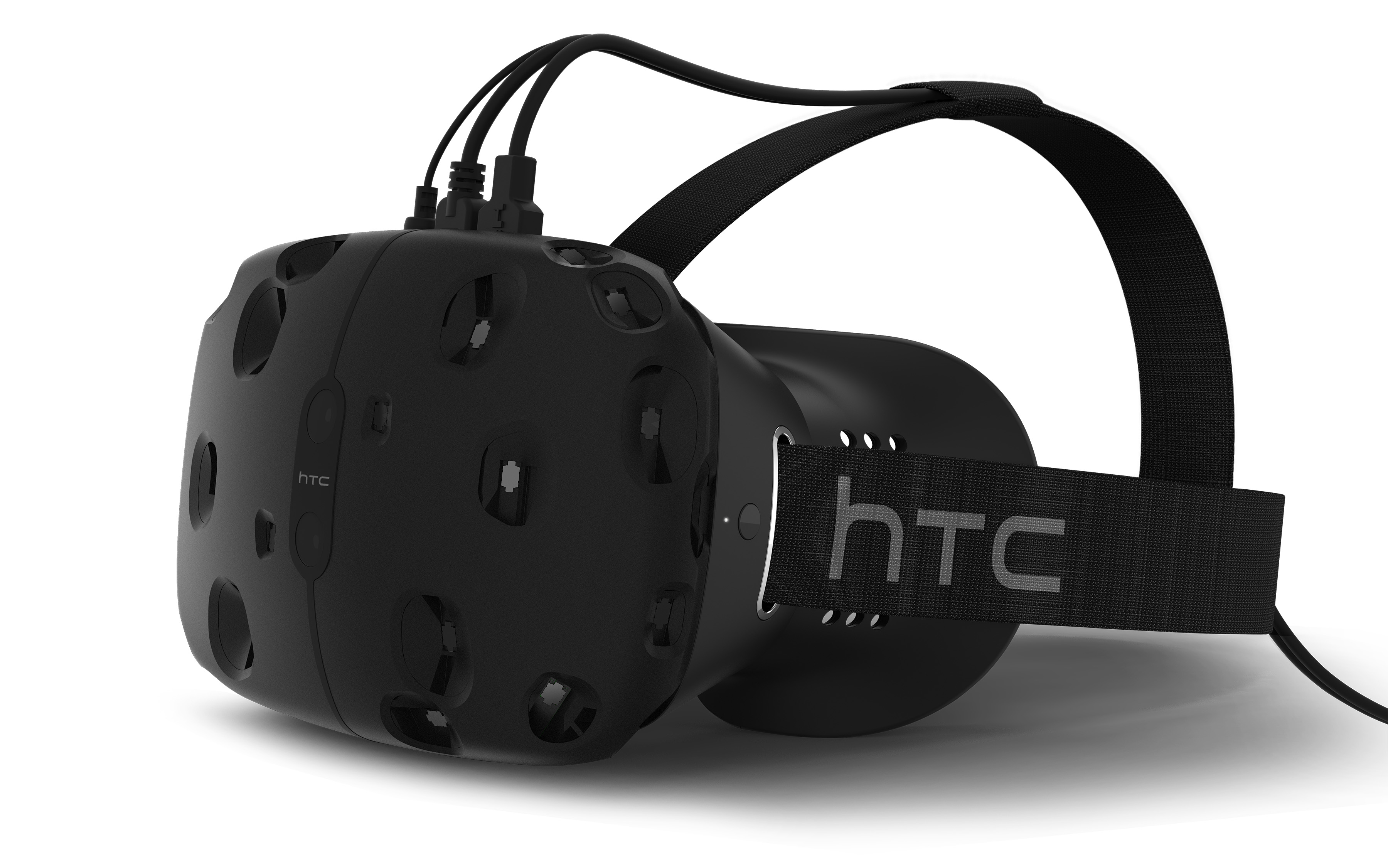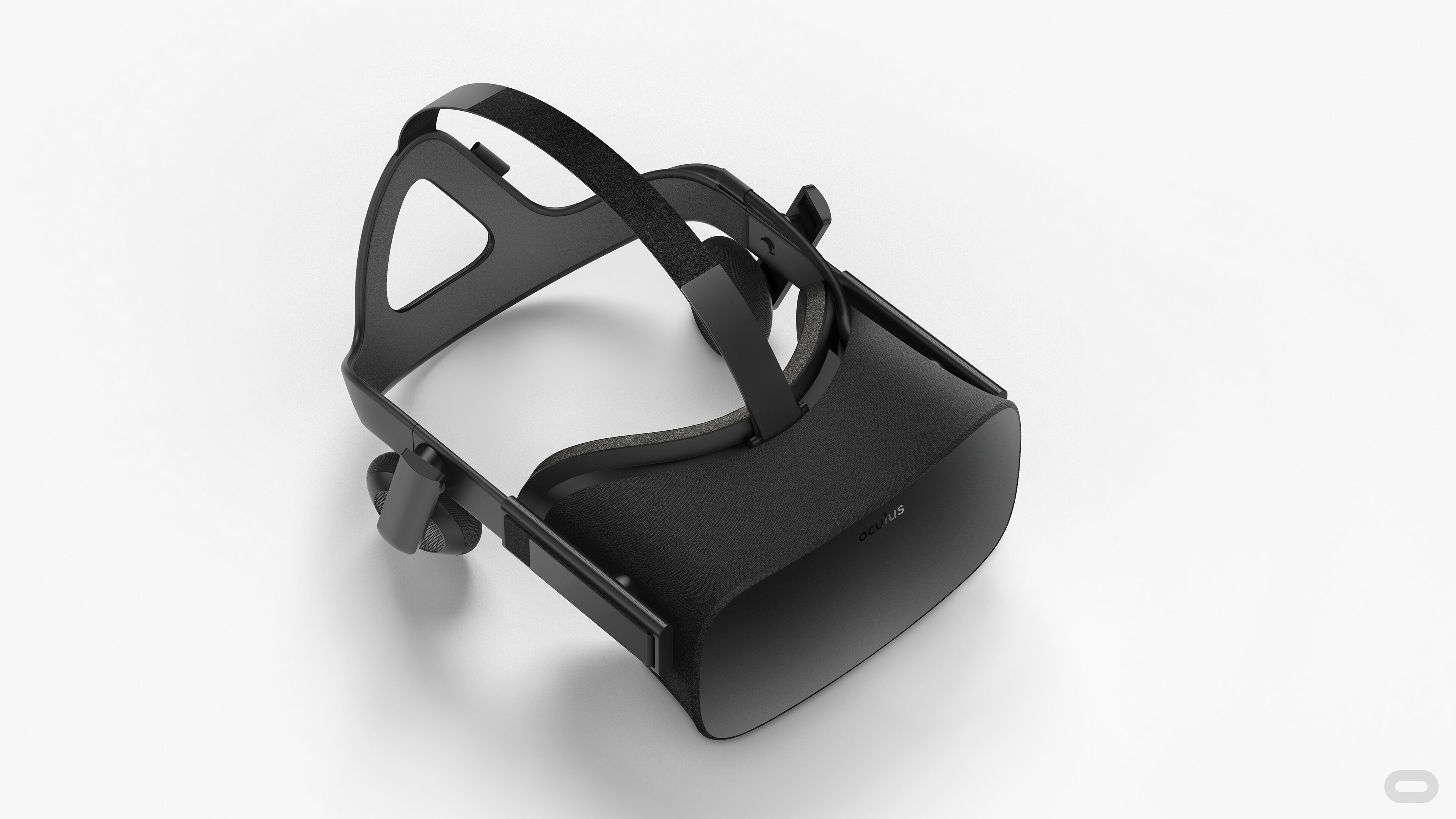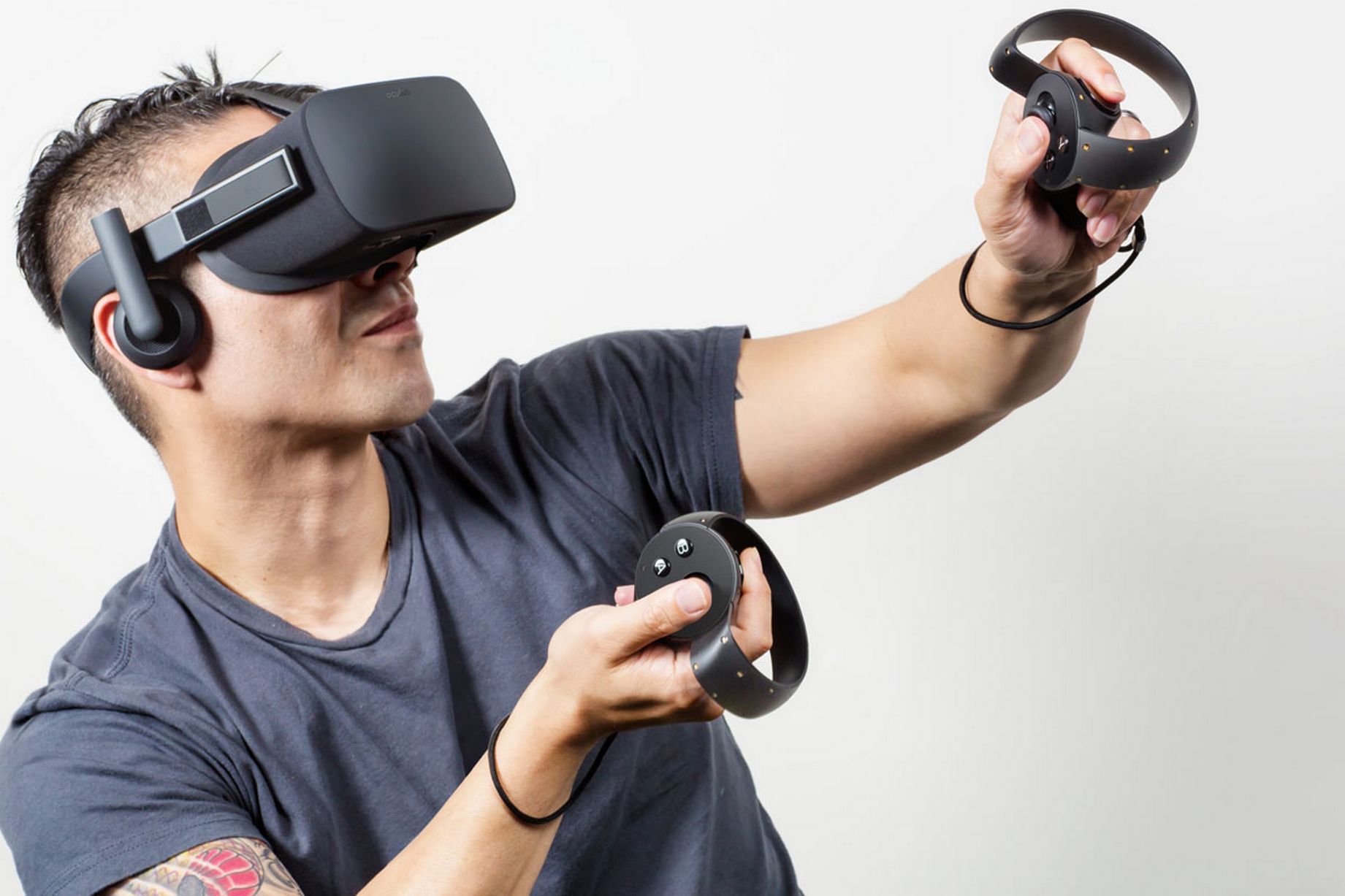The History Of Virtual Reality
2014 - Samsung Gear VR
By 2014, Samsung had formed a partnership with Oculus to create low-persistence OLED panels for the Rift. With Oculus' expertise in HMD design, the two companies created the Gear VR, a VR HMD that interfaces with Samsung's high-end smartphones.
The Gear VR lands somewhere between Google's Cardboard and the Oculus Rift in terms of quality. Like the Rift, it uses a wide array of sensors to monitor head movements, and it possesses an OLED display with a high refresh rate. Like Google's Cardboard, however, it also uses a smartphone placed inside of the headset for the display and to handle a great deal of the processing requirements.
The first version of the Gear VR Innovator Edition was released as a developer kit and it required a Samsung Galaxy Note 4 to operate. In 2015, Oculus and Samsung released the Innovator Edition for the Galaxy S6 (which was short-lived). In November 2015, Oculus and Samsung released the Gear VR consumer edition, which interfaces with the Galaxy S6, S6 Edge, S6 Edge+, Note 5, S7 and S7 Edge.
2015 - FOVE
FOVE's VR headset attempted to get a jump on its competition by introducing eye tracking technology inside of an HMD. Fove claims its HMD can track eye movements up to 1/5th of a degree. The system has a resolution of 2560x1440 and viewing angles of 100+ degrees. The headset is targeted at a wide range of uses, including games, healthcare and education.
2015 - Razer OSVR
At CES 2015, Razer announced its OSVR headset, an open source VR HMD. The headset, like the Oculus Rift and Samsung's Gear VR, uses an OLED display. In the OSVR, the display measures 5.5 inches and has a max display resolution of 2160x1200, or 1080x1200 for each eye. The headset also has gyroscopes and accelerometers, plus an infrared camera. Leap Motion has contributed to the project by working on motion controls.
2015 - Sensics dSight
The dSight HMD uses dual 1080p displays to create its stereoscopic 3D effects. It's somewhat limited in terms of its viewing angles, as users can see up to 120 degrees horizontally but only 63 degrees vertically. Like most 2015 HMDs, it takes advantage of the OSVR platform to gain a wider array of software support.
2015 - Vrvana Totem
The Vrvana Totem is one of the first HMDs to use the OSVR open source platform. It features viewing angles up to 120 degrees and has a 1440p OLED display. One of the key design goals for the Totem is to create a blended VR and AR device. The idea is to be able to create a virtual world, and then use augmented reality to shape it to the user's environment and pull real world objects into the game.
Get Tom's Hardware's best news and in-depth reviews, straight to your inbox.
2015 - VRUnion Claire
VRUnion's Claire
aims to push VR hardware above and beyond competing VR headsets. Its latest model, the Claire 22M, features a high resolution of 3840x1080. The headset has exceptionally wide viewing angles of 170 degrees, and it is compatible with several other VR technologies, including Leap Motion and the OSVR platform.
2015 - Project StarVR
Game developer Starbreeze, in partnership with several other developers, is working to create its own platform using the Steam OpenVR framework. The Star VR headset uses dual 5.5-inch 2560x1440 LCD displays. This helps to make the world look more detailed, and it pushes the viewing angles up to 210 degrees horizontally and 130 degrees vertically. It also uses advanced interface options, including head movement sensors and optical tracking devices.
2015 - HTC Vive DK1
In February 2015 at Mobile World Congress, HTC came out of nowhere and introduced the Vive VR HMD. The company partnered with Valve Corporation, which had been working internally on roomscale VR tracking for several years already, to create the Vive.
The system includes a fully tracked headset and two wand controllers. The Vive contains two displays running at 1080x1200 with a 90 Hz refresh rate. It is also equipped with a multitude of sensors to monitor head movements. HTC also integrated a unique feature into the headset: a camera attached to the outside of the HMD. The camera can scan real-world items into the virtual world.
It also boasts the ability to let you walk around in virtual space by tracking up to a 15x15 foot area of the real world thanks to the Lighthouse tracking system. The headset and controllers use an array of sensors that detect invisible lasers emitted across the tracked space from two Lighthouse base stations that are placed on opposing corners of the room.
The Vive is scheduled for release in April 2016.
2015 - Oculus CV1
Oculus revealed the consumer release version of the Rift HMD in June 2015 at an event the week before E3. The consumer version features dual low-persistence OLED displays, each with a resolution of 1080x1200, and a 90Hz refresh rate. The new Rift model has a brand new tracking system the company calls "Constellation," which tracks LEDs hidden behind a fabric cover on the headset.
Oculus also revealed that every Rift would include an Xbox One controller, which will be the primary control method for launch titles. At the June 2015 event, Oculus promised to release the Rift in the Q1 2016, and on March 28 it will deliver on that promise, just barely, to the first wave of pre-orders.
2015 - Oculus Touch Controllers
Oculus debuted its Touch VR motion controllers when it announced the final consumer version of the rift. Earlier in the year, HTC and Valve had demonstrated with the HTC Vive’s SteamVR controllers that natural interactions in VR (that is, in contrast to abstracted interaction using a game controller) are far more compelling. It only made sense then that Oculus would follow suit.
The Touch controllers are tracked by the same camera-based Constellation system as the Rift headset, but a second camera allows for full 180-degree tracking. Like the SteamVR controllers (and Wiimote and Move controllers), the Oculus Touch controllers are handheld and use the tracking to position your hands in the VR space but still use buttons to interact with most in-VR objects.
However, their most unique feature is enabled by the ring that encircles your finger. The ring contains sensors that allow the controllers to track finger gestures, which enhances social interactions when in multi-person VR -- something Facebook is surely interested in enabling.
The Touch controllers do not come included with the Rift itself, and Oculus has not committed to a release date, saying only that they’ll be out in the second half of 2016. There is also the unanswered question of whether the Rift plus Touch will be capable of full room-scale VR, like the HTC Vive.
-
Nuckles_56 Thanks for such an informative read, I never realized that the history of VR went so far back and that there were so many units in the 1990's as wellReply -
Virtual reality has no future just like no one cares about 3D TV. Sounds cool but it is meh. Toms hardware should move on and talk about something else.Reply
-
deathcall666 Youre wrong freak777power , 3D tv fails because television itselft is a dying industry. Older men uses tv more frequently the teenagers and they cant make the diference between a 3D or old tube TV anyways.Reply
Pc gaming is however not dying , and VR is just begining a new era. -
stackedoverpass @deathcall666 No its not like it. 2D sales in the cinema dwarf 3D gimmick tickets. The same analogy can be applied on VR. When 3D TVs came out, TV were booming and big and next frontier seemed to be 3D. VR going to be flop like LCD watchesReply -
cats_Paw VR is still in its infant stages.Reply
For VR to be FULLY inmersive we need:
1. eye tracking for realistic viewing angles
2. high fidelity panels (LED and OLED are not yet).
3. A way to be able to "move" in the environment (some projects are out there, not done yet).
4. Kinetic gloves that will allow us to "feel" something we touch/pick up in a game.
5. Accurate positinal audio.
6. near 0 latency.
So, its looking good? yes Its going forward? Yes.
Are we there yet?
Not even close. -
hdmark I think it really depends on how you view VR. If you look at it for purely gaming... I don't see it being big just yet. another few years when its cheaper maybe, but not yet.Reply
But where most people are wrong when they compare VR to 3D TV's is that VR has a HUGE application base outside of gaming. Industries around the world are already using VR and the more developed VR and AR get, the more applications it will be used for.
The two major examples I keep thinking of in my head are in the medical and construction fields. Im 99% sure they are already using VR hooked up with robotics to do some surgeries. and in the construction field... well imagine workers wearing hardhats with VR . Not only would it be able to alert them quicker of dangers, they would also have readouts of what they are working on. They don't need to go check blueprints anymore and diagrams, if they have a 3D model in front of them where everything should go -
IInuyasha74 Reply17709783 said:VR is still in its infant stages.
For VR to be FULLY inmersive we need:
1. eye tracking for realistic viewing angles
2. high fidelity panels (LED and OLED are not yet).
3. A way to be able to "move" in the environment (some projects are out there, not done yet).
4. Kinetic gloves that will allow us to "feel" something we touch/pick up in a game.
5. Accurate positinal audio.
6. near 0 latency.
So, its looking good? yes Its going forward? Yes.
Are we there yet?
Not even close.
Actually in one form or another we have all of that except the kinetic gloves. What really needs to happen is it all needs compacted down into one device. That is starting to happen, but still a little ways off. -
TX_Tech A local arcade had the Virtuality 1000CS back in the 90s, I remember playing it a few times, but it was expensive per game, so not as much as I wanted.Reply
It wasn't perfect, but it was better than much of what came next. -
TX_Tech ReplyThanks for such an informative read, I never realized that the history of VR went so far back and that there were so many units in the 1990's as well
I'm 40, so I remember many of these devices. The younger 20 year olds today often think this is all new, but it really isn't. The devices have better resolution and wireless is a thing now, but the old problems still exist.
The real dream is the Holodeck, I remember 1987 and watching ST:TNG in first run and being wowed by that, thinking "my lord, that would be amazing, I want it!", but as time has marched on, I've come to accept that it won't happen in my lifetime.
VR is a nice idea, but I think execution is going to be the problem. Because everyone has a monitor and most people don't have VR, it won't get the type of broad support it needs to become something. And frankly, I don't think most people WANT to put a big device on their heads.
